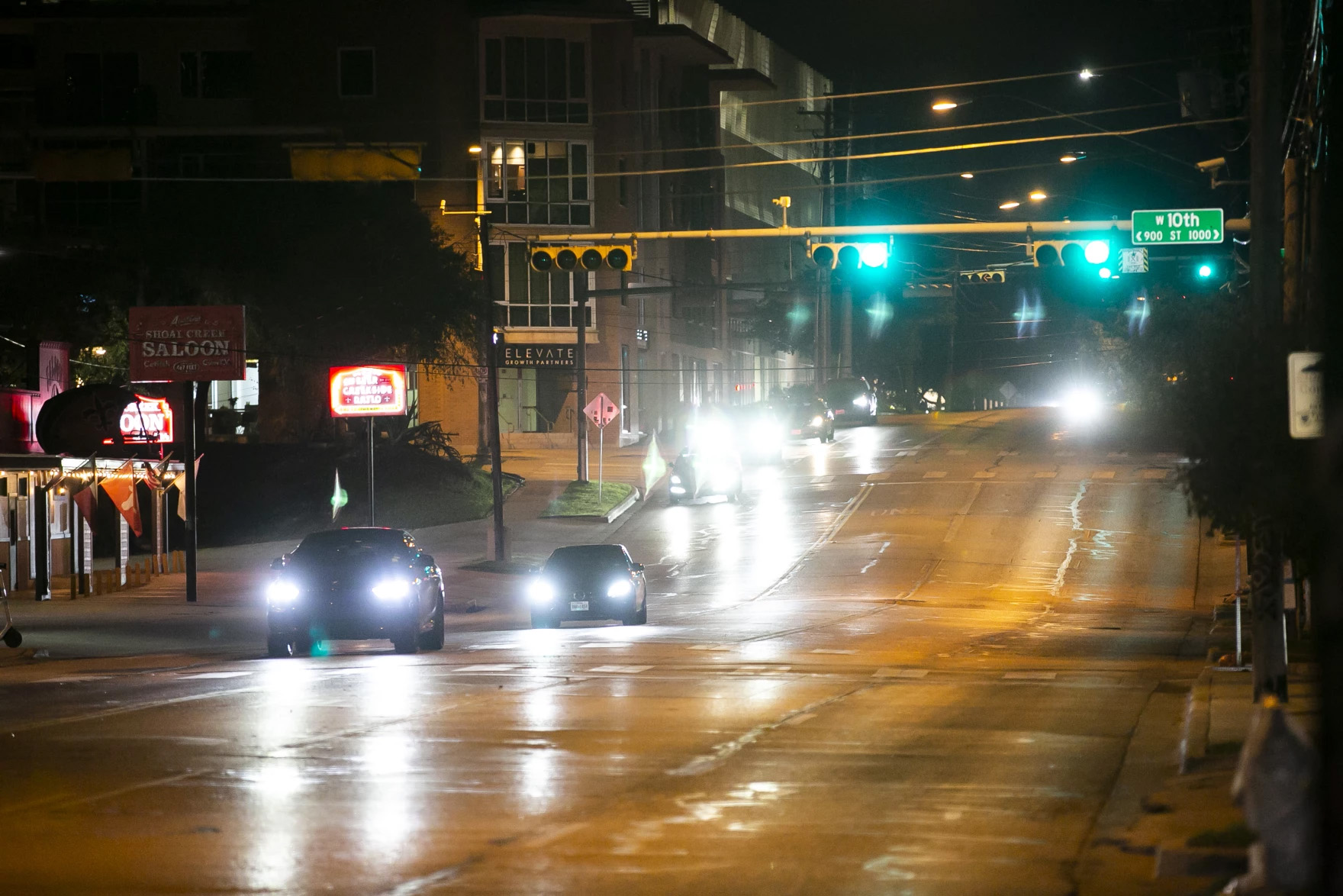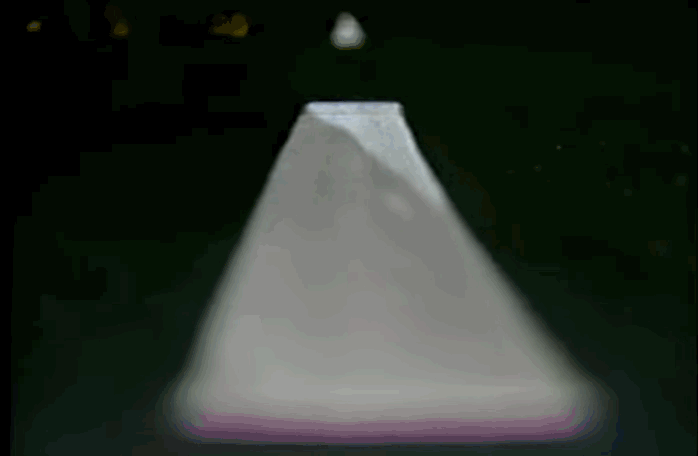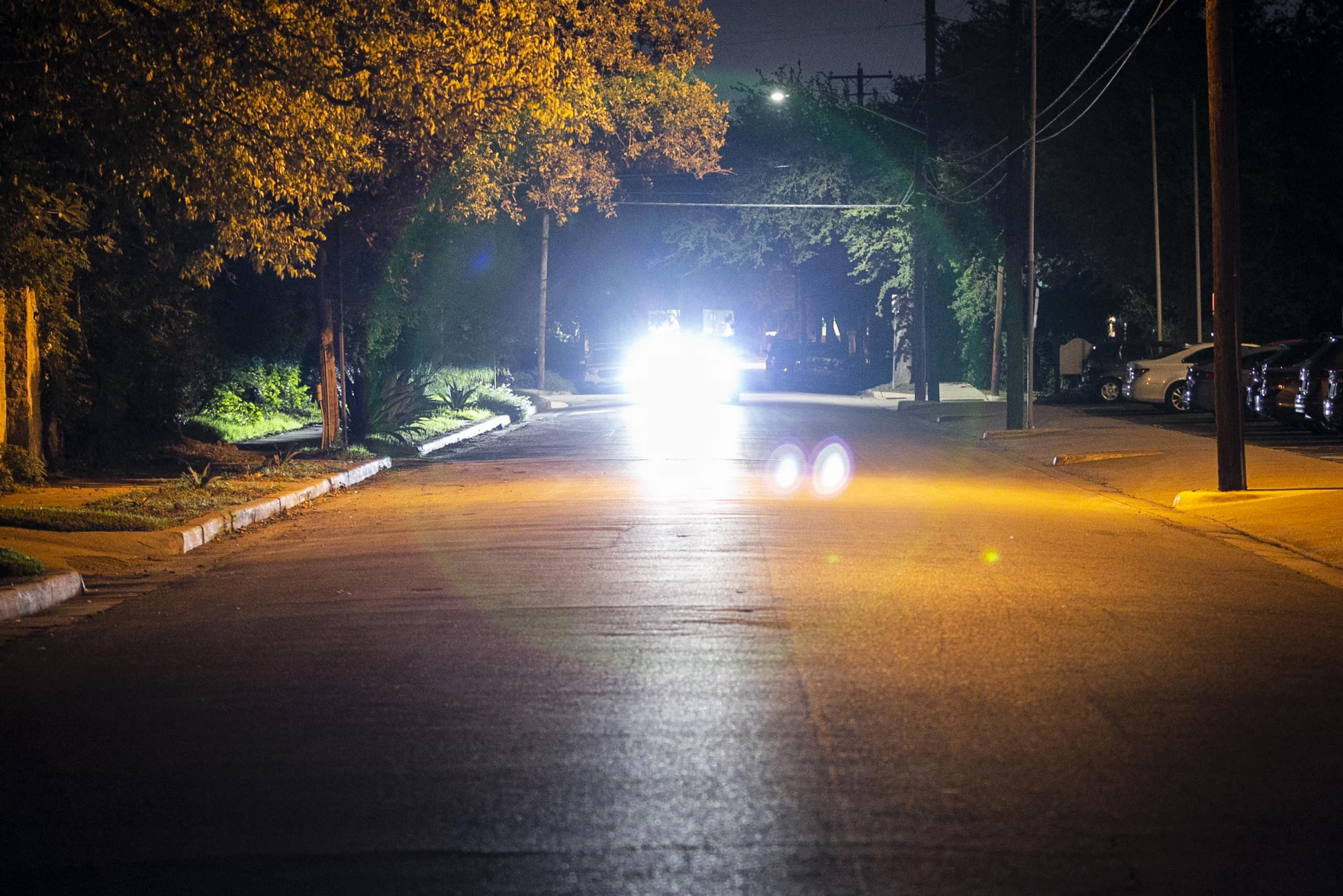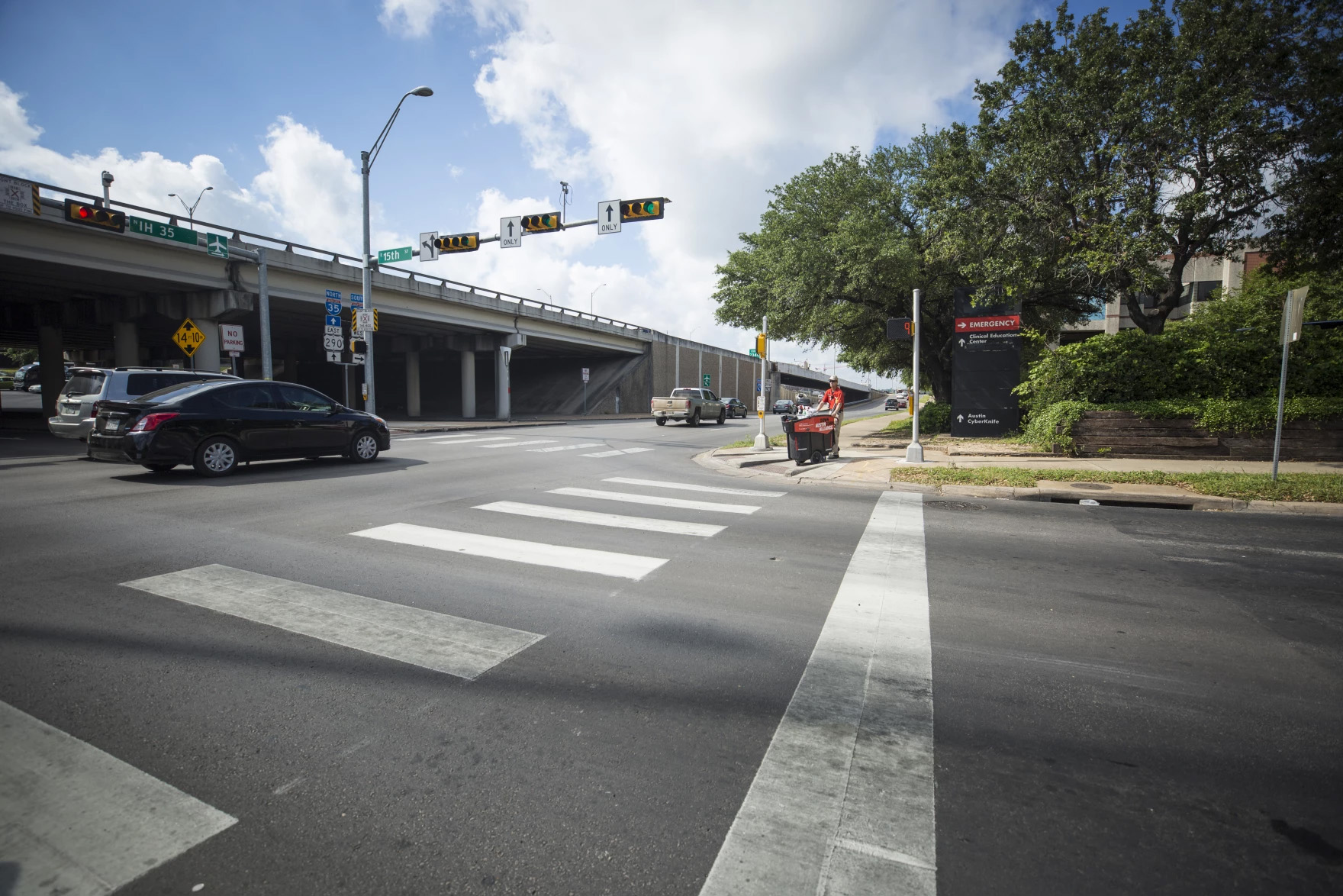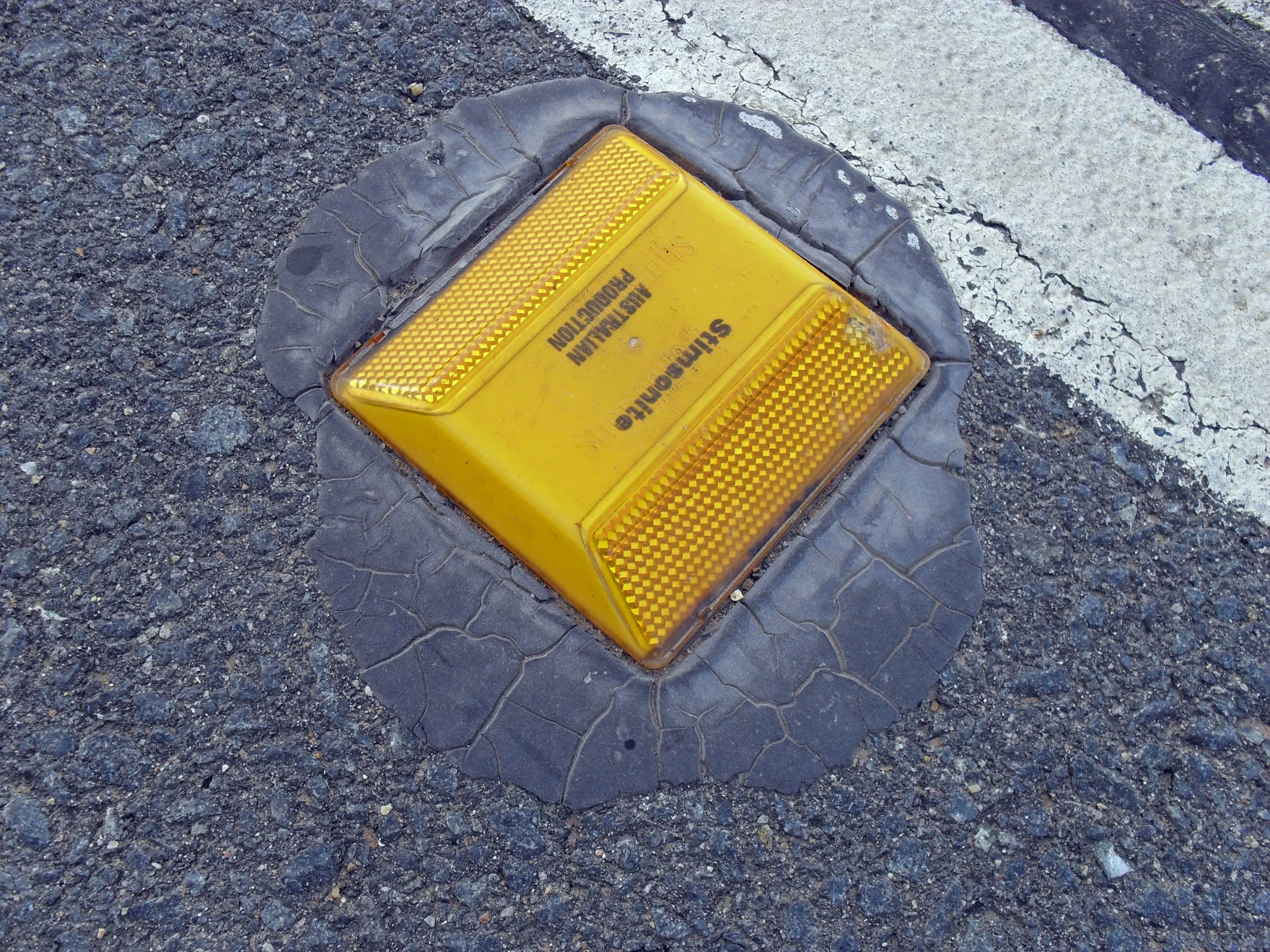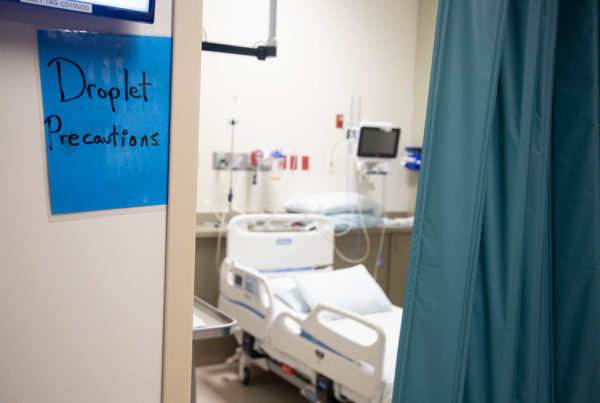From KUT:
North Austinite Jennifer Thall gripped the steering wheel of her Toyota Corolla while driving to pick up some free houseplants in the Copperfield neighborhood one night. The lane lines on the asphalt seemed to vanish in front of her.
“There’s a lot of places in Austin that the lane lines themselves are very, very hard to see at night,” she said on a rainy afternoon in North Austin. “It can be really scary if there’s oncoming traffic, just kind of hoping that they’re not trying to play chicken with you. And if they have bright headlights, it’s even worse because you’re just driving into a bright light.”
Thall wondered why the lines are so hard to see in the dark, so we looked into it for our ATXplained project.
More than half of road deaths in Austin happen overnight. Quite often the crashes involve people veering outside their lanes, so the city tries to keep the lines looking bright.
“We have about 40 technicians and they are working hard every day,” said Lauren Seyda, who oversees signs and markings for Austin’s Transportation Department. “They feel the burden that there is a lot of work to do.”
The city aims to restripe half the city’s major thoroughfares — so-called arterial roads — every year. That’s about 185 miles of streets. Last fiscal year, Austin repainted 54% of arterials. Non-arterial roads get restriped every four years or so.
“We could have 100 more staff and all the trucks in the world and there would still be work. There’s just so many streets,” Seyda said.
A striper truck sprays the lines and then tiny glass beads, almost like a powder, are blasted on top and stick to the paint.
Each glass bead works as a small directional mirror to reflect your headlights back at you. The directional bouncing of light is called retroreflectivity. That’s why freshly painted traffic markings appear to glow at night.


